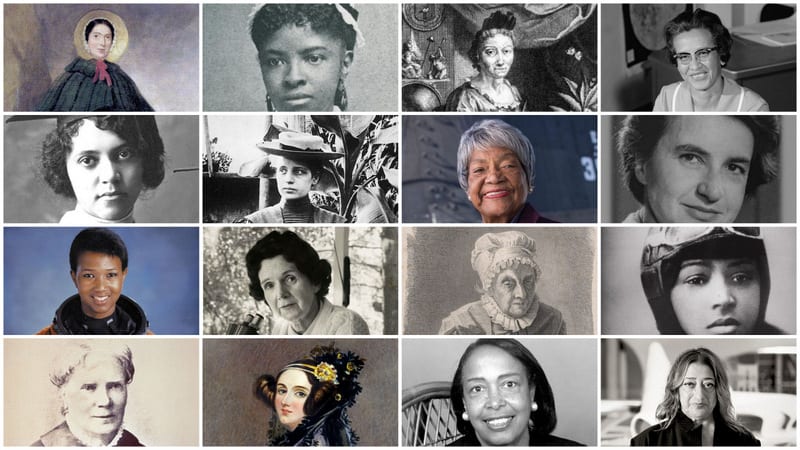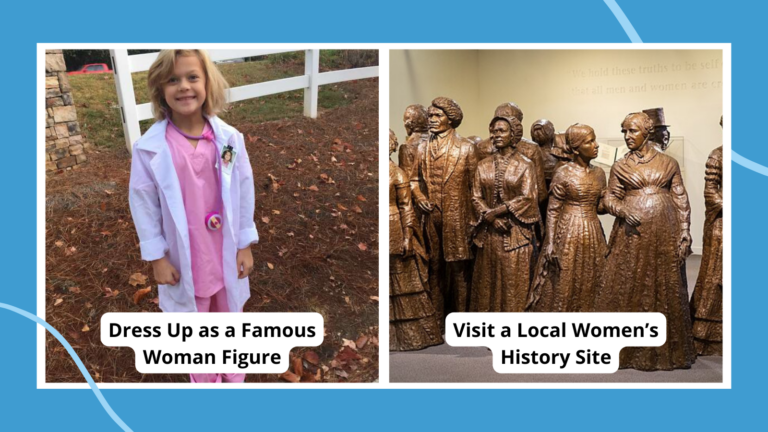Ask your students to name a female scientist, and they’ll most likely come up with Marie Curie (if anyone at all). And while Marie’s contributions were incredibly important, she’s just one of a long line of women scientists your students should know more about. Start with this list of 16 women who studied everything from butterflies to dinosaurs to nuclear physics. Make the lessons come alive by doing a hands-on experiment or activity, just like these wonderful women did. There’s so much here to inspire the next generation!
Just a heads up, WeAreTeachers may collect a share of sales from the links on this page. We only recommend items our team loves!
1. Maria Sibylla Merian, Entomologist and Artist (1647–1717)

Why she’s wonderful: Love butterflies? So did Maria Sibylla Merian—so much that she was one of the first to truly understand and illustrate metamorphosis. Her beautiful full-color illustrations (unusual at the time) showed the world how magnificent these creatures are. In 1699, at the age of 52, Maria traveled from Europe to Dutch Suriname in South America. For two years, she explored the jungles and created some of her best-known work.
Read about her: Little ones will enjoy Summer Birds (Engle/Paschkis, 2010) and The Girl Who Drew Butterflies (Sidman, 2018). Older readers can learn more about her life in Chrysalis: Maria Sibylla Merian and the Secrets of Metamorphosis (Todd, 2007).
Try this: Take kids out to look at butterflies in the garden and have them start their own nature journals, documenting and drawing what they see. Explore the life cycle of a butterfly close up by raising them in the classroom or, better yet, by establishing a butterfly garden on your school’s grounds.
Other women scientists like Maria Sibylla Merian: Eleanor Glanville (1654–1709) was studying butterflies in England around the same time. Maria Martin Bachman (1796–1863) worked with John James Audubon, painting parts of his bird portraits.
2. Caroline Herschel, Astronomer (1750–1848)
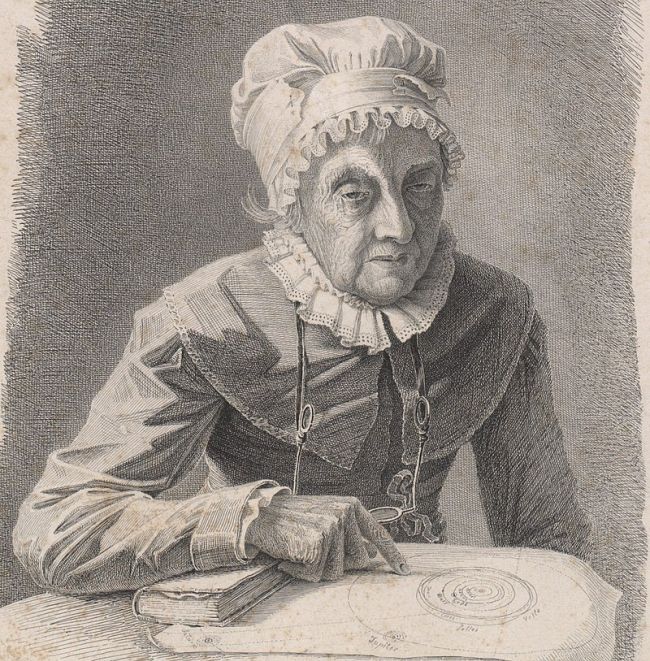
Why she’s wonderful: Though she aided her brother, William, in discovering the planet Uranus, Caroline was much more than just her brother’s assistant. Throughout her long career, she discovered eight comets, received the Gold Medal from the Royal Astronomical Society, and was one of the first women scientists invited to join the Royal Society.
Read about her: Younger students can learn more about Herschel in Caroline’s Comets (Arnold McCully, 2017), while upper grades can read The Quiet Revolution of Caroline Herschel (Winterburn, 2018) or even pore through her own memoir and correspondence.
Try this: Visit a local planetarium to see a show or have students build their own simple telescopes and hold a nighttime stargazing session on the playground.
Other women scientists like Caroline Herschel: Maria Mitchell (1818–1889) and Annie Jump Cannon (1863–1941) were both American astronomers who made significant contributions to the field.
[contextly_auto_sidebar]
3. Mary Anning, Paleontologist (1799–1847)
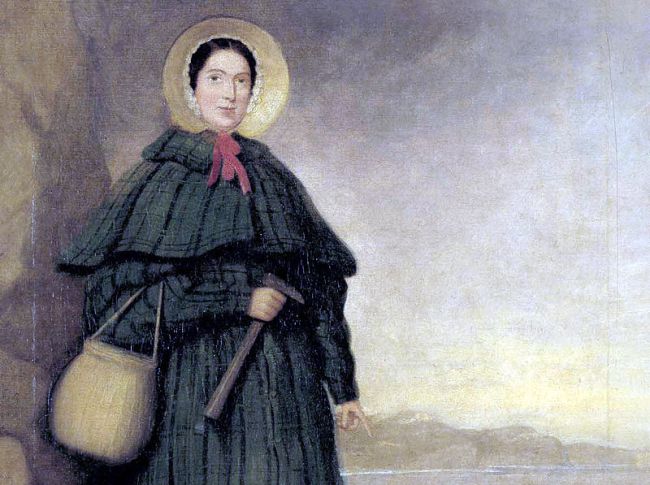
Why she’s wonderful: Most kids dream of digging for dinosaur bones, but imagine finding one before the world really even knew dinosaurs existed! Mary excavated the first complete ichthyosaur skeleton and the most complete plesiosaur at the time. She also discovered the first pterosaur. These discoveries led to the understanding of the age of dinosaurs and the concept of extinction.
Read about her: There are several books about Anning’s life written for younger readers, among which the most popular is probably Stone Girl, Bone Girl (Anholt/Moxley, 2006). Older students can get a more detailed look at her life in The Fossil Hunter (Emling, 2011).
Try this: Little fingers will love the chance to make their own “fossils” using clay and plaster of paris. Or, invest in a “dig your own fossil” kit and let them feel like real paleontologist!
Other women scientists like Mary Anning: Margaret Murray (1863–1963) was an archaeologist who specialed in Egypt. Mary Leakey (1913–1996) was a paleoanthropologist who studied hominid ancestors.
4. Ada Lovelace, Mathematician (1815–1852)

Why she’s wonderful: Her father was the poet Lord Byron, and her marriage made her the Countess of Lovelace, but Ada’s passion was mathematics. She and Charles Babbage worked together to create what many consider the first computer, the Analytical Engine. She’s widely regarded as the first computer programmer.
Read about her: Little ones can meet this wonderful scientist in Ada Lovelace, Poet of Science (Stanley/Hartland, 2016)and Ada Byron Lovelace and the Thinking Machine (Wallmark/Chu, 2015). Middle schoolers will get a kick out of the graphic novel The Thrilling Adventures of Lovelace and Babbage (Padua, 2015).
Try this: Give kids a chance to try their hand at present-day coding and programming with these 8 Fun & Easy Coding Projects for Kids.
Other women scientists Like Ada Lovelace: Émilie du Châtelet (1706–1749) translated Isaac Newton’s Principia and wrote a seminal text on physics. Grace Hopper (1906–1992) was an American Naval Rear Admiral who worked on the first commercial computer in the US.
5. Elizabeth Blackwell, Doctor (1821–1910)

Why she’s wonderful: In 1849, Elizabeth Blackwell became the first woman to earn a medical degree in the US. She was instrumental in opening up the field of medicine for women, mentoring many women who went on to careers in the field. Dr. Blackwell also focused on providing better health care for women and children.
Read about her: Grab their interest in early grades with Who Says Women Can’t Be Doctors? (Stone, 2018). Older readers can explore her life in The Excellent Doctor Blackwell (Boyd, 2013).
Try this: Learn more about human anatomy by building a brain model with Play-Doh, experimenting with digestion, or constructing a model lung with balloons and a bottle.
Other women scientists like Elizabeth Blackwell: Elizabeth’s student, Dr. Mary Putnam Jacobi (1842–1906), advocated for women’s health and women’s rights. Rebecca Lee Crumpler (1831–1895) was the first black woman in the US. to become a doctor.
6. Mary Eliza Mahoney, Nurse (1845–1926)

Why she’s wonderful: Mary Eliza Mahoney was one of the first black registered nurses in the US and fought to ensure that she and other black female nurses received the respect they deserved. She was one of the original members of what later became the American Nurses Association.
Read about her: Introduce younger kids to Mary Eliza with her overview in Little Leaders: Bold Women in Black History (Harrison, 2017). Older readers can learn more in Mary Eliza Mahoney and the Legacy of African-American Nurses (Darraj, 2005).
Try this: Invite a local nurse to come talk to your students about what present-day nursing duties are like.
Other women scientists like Mary Eliza Mahoney: Florence Nightingale (1820–1910) was the founder of modern nursing. Clara Barton (1821–1912) was Nightingale’s contemporary and the founder of the American Red Cross.
7. Lise Meitner, Physicist (1878–1968)
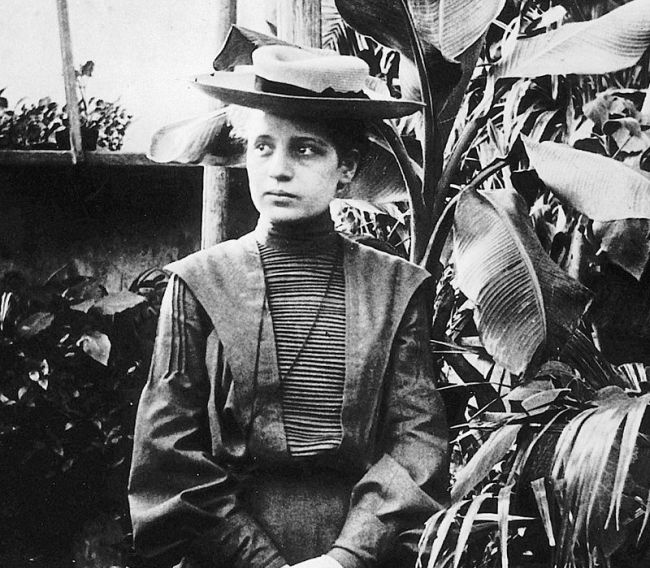
Why she’s wonderful: Lise worked with two other scientists to make one of the most important scientific discoveries of the 20th century: nuclear fission. This opened up the whole new world of nuclear physics. Lise has an element on the period table named after her, meitnerium (109).
Read about her: Lise Meitner Had the Right Vision About Nuclear Fission (Venezia, 2010) is an easy-to-read overview of Meitner’s accomplishments. Engage middle school students with the narrative nonfiction of Radioactive! How Irène Curie and Lise Meitner Revolutionized Science and Changed the World (Conkling, 2016).
Try this: Celebrate Nuclear Science Week with these lesson ideas.
Other women scientists like Lise Meitner: Marie Curie (1867–1934) was the pioneer of radioactivity research. The work Marie Curie’s daughter Irene Joliot-Curie (1897–1956) did on artificial radioactivity paved the way for Lise’s discoveries.
8. Bessie Coleman, Aviator (1892–1926)
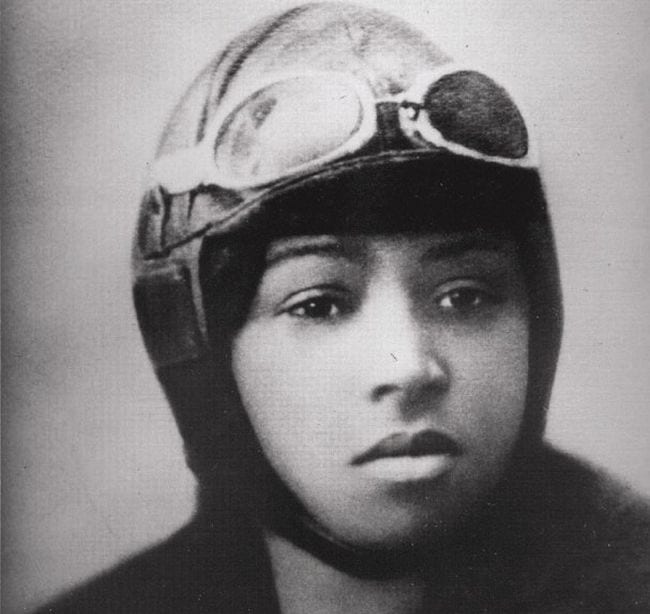
Why she’s wonderful: Bessie was the first woman of African American and Native American descent to earn a pilot’s license. She was an exhibition aviator, inspiring women and men of all kinds to dream of flying their own planes one day.
Read about her: The bright colors and easy text of Fly High! The Story of Bessie Coleman (Bordan/Kroeger, 2004) will appeal to little ones. Talkin’ About Bessie: The Story of Aviator Elizabeth Coleman (Grimes/Lewis 2002) is historically accurate fiction for middle school students.
Try this: Every kid loves a paper airplane contest, and they’ll get lots of practice with engineering and physics along the way. Challenge older students to learn how to prepare and calculate a flight plan.
Other women scientists like Bessie Coleman: Amelia Earhart (1897–1939) was the first woman to fly solo across the Atlantic Ocean. Jackie Cochran (1906–1980) was a racing pilot who helped form women’s flying service organizations in World War II.
9. Alice Ball, Chemist (1892–1916)

Why she’s wonderful: Alice was the first woman and African-American to earn a master’s degree from the College of Hawaii (now the University of Hawaii at Mānoa). She developed an injectable treatment for leprosy that became the standard for more than two decades.
Read about her: Women in Science: 50 Fearless Pioneers Who Changed the World (Ignotofsky, 2016) has a good bio for younger kids. Find more information about her in Headstrong: 52 Women Who Changed Science—and the World (Swaby, 2015).
Try this: Learn the basics of separating a mixture with these easy experiments from Sciencing. Use red cabbage to make your own pH indicator strips to test acidity and alkalinity.
Other women scientists like Alice Ball: Gertrude B. Elion (1918–1999) was a biochemist whose inventions included treatments for leukemia and AIDS. Rosalyn Sussman Yallow (1921–2011) developed a method for testing donated blood for infectious diseases, making the process safer.
10. Rachel Carson, Marine Biologist and Conservationist (1907–1964)

Why she’s wonderful: Rachel loved the sea and used her poetic talents to write a trilogy of beautiful books extolling its wonders. Over time, though, she became convinced of the dangers of pesticides like DDT. She sparked the conservation movement (and eventually the formation of the Environmental Protection Agency) with her most famous work, Silent Spring.
Read about her: For beginning readers, try Rachel Carson and Her Book That Changed the World (Lawlor/Beingessner, 2014). Older kids can read some or all of Carson’s books themselves, beginning with the famous Silent Spring.
Try this: Support your students in starting a school green club or implementing more recycling initiatives throughout school.
Other women scientists like Rachel Carson: Jeanne Villepreaux-Power (1794–1871) was a pioneering marine biologist who invented the aquarium. Marjorie Stoneman Douglas (1890–1998) wrote The Everglades: River of Grass, a seminal work of the conservation moment.
11. Rosalind Franklin, Chemist (1920–1958)
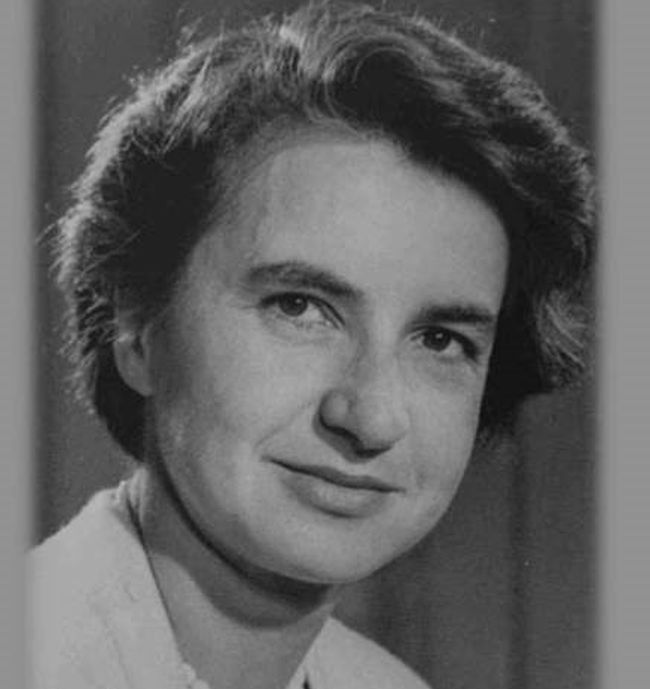
Why she’s wonderful: Rosalind was one of the most overlooked women scientists in history. Her X-ray diffraction images of DNA enabled Watson and Crick to make their discovery of the double-helix shape. They received the Nobel Prize, and she remained in the shadows. Rosalind also made important contributions to the studies of RNA and viruses.
Read about her: Find Rosalind Franklin in Women in Science: 50 Fearless Pioneers Who Changed the World (Ignotofsky, 2016). Read a full biography, like Rosalind Franklin: The Dark Lady of DNA (Maddox, 2013).
Try this: Build an edible DNA model from candy or fruit or try extracting DNA from a strawberry.
Other women scientists like Rosalind Franklin: Martha Chase (1927–2003) worked with Alfred Hershey to prove that DNA holds and transmits genetic information. Barbara McClintock (1902–1992) studied the genetic structure of maize, making multiple important genetics discoveries.
12. Katherine Johnson, Mathematician (1918–)
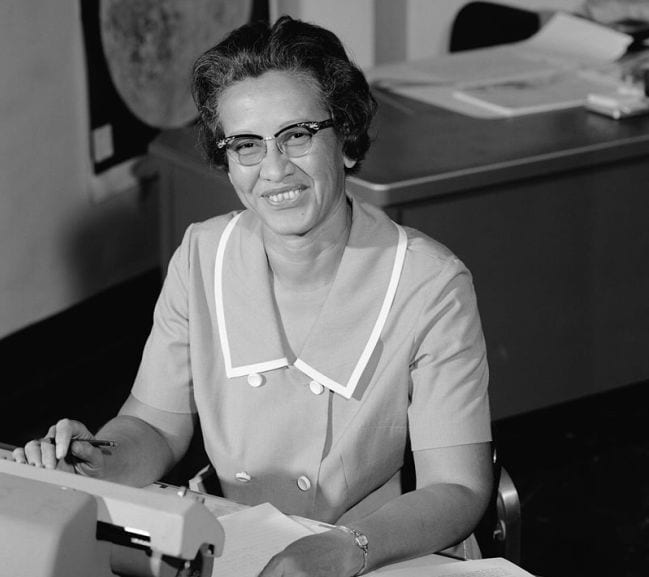
Why she’s wonderful: Anyone who’s seen Hidden Figures knows that Katherine’s manual mathematical calculations were essential to the space program. She calculated (without computers!) trajectories, launch windows, and flight paths for programs from Project Mercury to the space shuttle. And she did it all while dealing with racism and misogyny.
Read about her: Counting on Katherine: How Katherine Johnson Saved Apollo 13 (Becker/Phumiruk, 2018) is a terrific read aloud for younger grades, with its repeated theme of “you can count on me!” Introduce the Hidden Figures story to elementary readers with Hidden Figures: The Story of Four Black Women and the Space Race (Shetterly/Freeman, 2018) or the Hidden Figures Young Readers’ Edition (Shetterly, 2016).
Try this: Get some protractor practice with a “moon math” lesson in drawing angles. Download the free Hidden Figures Curriculum and Discussion Guide for even more ideas.
Other women scientists like Katherine Johnson: Katherine’s fellow NASA mathematicians, like Dorothy Vaughan (1910–2008) and Mary Jackson (1921–2005), made early space travel possible. Margaret Hamilton (1936– ) coined the term “software engineer” and developed the onboard software used in the Apollo program.
13. Raye Montague, Naval Engineer (1935–2018)
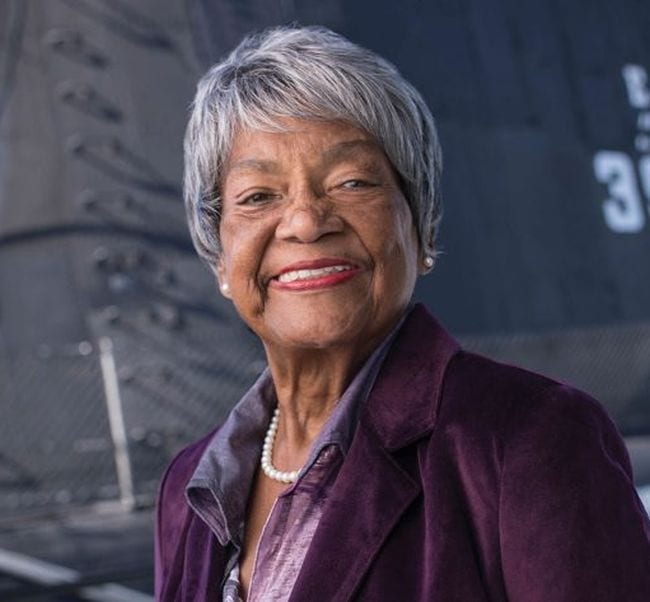
Why she’s wonderful: Raye joined the Navy as a typist while studying computer programming at night. In the 1970s, she became the first person to generate a naval ship design using a computer program. Raye later went on to become the first female program director of ships in the US Navy.
Read about her: The simple illustrations and rhyming text of The Girl With a Mind for Math: The Story of Raye Montague (Mosca/Riely 2018) will appeal to elementary kids.
Try this: Have students design and build their own boats with basic household materials. Have a contest to see whose boat can hold the most cargo or win a race.
Other women scientists like Raye Montague: Edith Clarke (1883–1959) was the first female electrical engineer. Emily Warren Roebling (1843–1903) took over and completed overseeing the construction of the Brooklyn Bridge after her husband fell ill.
14. Patricia Bath, Ophthalmologist and Inventor (1942– )
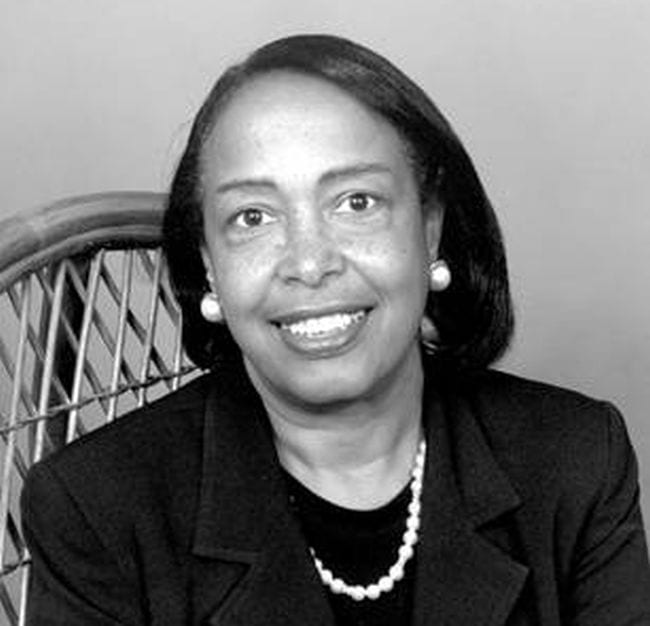
Why she’s wonderful: Patricia won a National Science Foundation scholarship in high school, going on to become the first female member of the Jules Stein Eye Institute. She holds five patents, including those for a groundbreaking laser technology used to treat cataracts.
Read about her: Share Patricia’s story with younger kids by reading The Doctor with an Eye for Eyes: The Story of Dr. Patricia Bath (Mosca/Riely, 2017). Dr. Bath herself wrote Rainbow Science: What, Why, How? (2018).
Try this: Create a simple model of the human eye and learn more about how it works with this Mystery Science lesson. Use a mirror and magnifying glass to get a better look at your eyes and see how the pupils dilate.
Other women scientists like Patricia Bath: Virginia Apgar (1909–1974) invented the Apgar test used to assess the health of newborn babies. Katharine Burr Blodgett (1898–1979) created nonreflective glass while working for GE.
15. Mae Jemison, Astronaut (1956– )
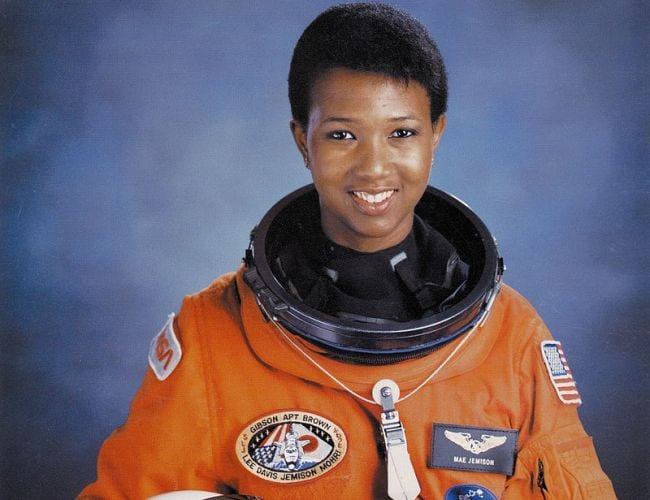
Why she’s wonderful: Sally Ride was the first female astronaut in space in 1983, which encouraged Mae to shoot for the stars as well. In 1992, she became the first African American woman to go to space aboard the shuttle Endeavor. She holds a medical degree, is a college professor, and founded a company to work with space-age technology.
Read about her:Mae Among the Stars (Ahmed/Burrington 2018)tells her story in picture-book format for wee ones. For upper grades, Mae herself wrote Find Where the Wind Goes: Moments From My Life (Jemison, 2001).
Try this: Create cardboard space shuttle modelsfrom toilet paper tubes. Splurge a little on the LEGO Women of NASA kit for your classroom, which includes Jemison and three other wonderful women scientists.
Other women scientists like Mae Jemison: Sally Ride (1951–2012) sparked the imagination of millions of little girls by her journey into space. Eileen Collins (1956– ) was the first female commander of the space shuttle in 1999.
16. Zaha Hadid, Architect (1950–2016)
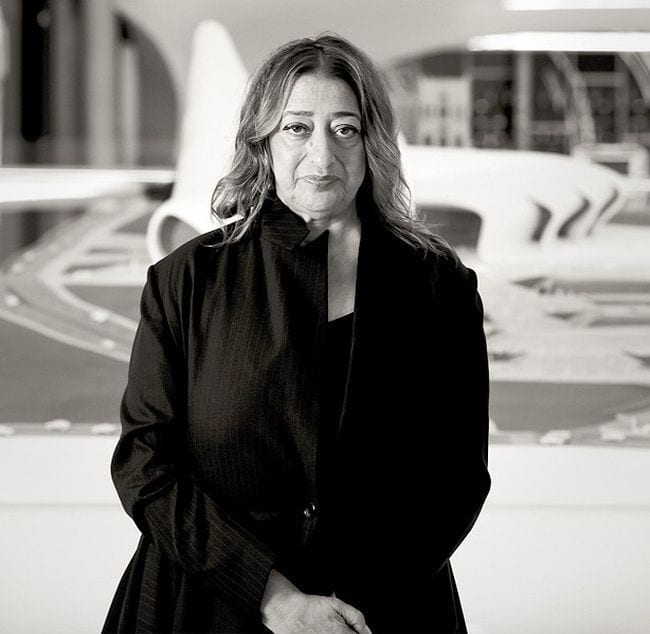
Why she’s wonderful: Zaha was an Iraqi-British architect known for her incorporation of stunning curves into her designs. She was the first woman to receive the Pritzker Architecture Prize and is the first and only woman to receive the Royal Gold Medal from the Royal Institute of British Architects.
Read about her: The bright illustrations of The World Is Not a Rectangle (Winter, 2017)paint a beautiful picture of Zaha’s story for younger kids. See drawings and photos of her buildings in The Complete Zaha Hadid (2018).
Try this: Design and architecture require important STEM skills, so encourage your students to try projects like designing a bridge that can bear weight or the creating the tallest possible building from straws.
Other women scientists like Zaha Hadid: Louise Blanchard Bethune (1856–1915) is considered to have been the first female architect. Maya Lin (1959– ) is an American architect who designed the Vietnam Veterans Memorial in Washington, DC.
Who are your favorite female scientists to celebrate? We’d love to hear in our WeAreTeachers HELPLINE group on Facebook.
Inspire the next generation of wonderful women scientists! See 8 Ways to Get More Girls Involved in STEM That Really Work.
Plus, our favorite classroom books for Women’s History Month.

